This morning, I took Neno’s free walking tour of Sarajevo. This was a really interesting tour as I got all the answers I wanted about Bosnian history. Neno remembers the war of ’92 to ’95 quite well since he was seven to eleven years old at the time and his family spent all 44 months in Sarajevo. But I’m betting ahead of myself.
The tour starts in front of the National Theatre at Susan Sontag Square. I had no trouble finding it even though it was off my map of old town. En route, I passed a few things of interest, like this clothesline. Can you imagine a city or even suburban town in Canada or the US permitting this?! For all we think we are forward thinking, we are incredibly short-sighted.
The hills on the other side of a river looked like a Hollywood backdrop, they were so beautiful.
Don’t they?!
I wish I knew more about these ruins. There is a dearth of signage in Sarajevo, something Neno brought up. Part of the reason is that there are disputes about who should pay for signs.
Sarajevo comes from two Turkish words, Saraj, palace or seat of assembly, and evo, valley. As I said in another post, I find that Sarajevo’s position in a valley is unusual. It definitely limits its growth.
Here’s the National Theatre:
I was surprised to see Cyrillic. Neno would later explain to me that there is a part of Sarajevo, where the airport and East bus station are located, that is called Republika Srpska. It is a Serbian part of BiH and almost autonomous (think of Quebec in Canada, an example Neno brought up, not just my interpretation!). They favour the Cyrillic script while the rest of BiH favours the Latin script.
Neno started with a really comprehensive history of BiH. Surprisingly, it was a much easier narrative to follow than that of Bulgaria! In a nutshell:
The Ottoman Empire ruled here for 500 years, from the end of the 14th century to the end of the 19th century.
Austria-Hungary then came in for 40 years, which is when Sarajevo was modernized. Streets were widened, structures like the National Theatre were built, tram cars came in, street lighting was installed, etc.
After WWI was the first Yugoslavia, which was considered a period of stagnation. The capital was Belgrade and Sarajevo was neglected. There are no examples of Art Deco buildings in Sarajevo like you can see in Belgrade because there was barely any construction during the ’20s and ’30s.
After WWII came the second Yugoslavia, under the dictator Tito. Older Bosnians today think fondly of the ’60s and ’70s, remembering them as being more prosperous times. Tito died in 1980 and things went downhill over the next decade and a half, with the member states of Yugoslavia declaring independence one after the other.
The Siege of Sarajevo, “the longest siege of a capital history in the history of modern warfare” was started by the leadership of Republika Srpska, the Serbs, one of many ethnic groups in the area. They were vanquished by the Bosnians and Croats. The siege lasted 44 months, almost four years.
Neno comes from a mixed marriage, a Bosniak (Muslim) mother and a Serb (Orthodox) father. His father insisted on staying because Sarjevo was his home and, besides, there was no way the war would last more than a week… The family lives in “Communist blocks” about three kilometres from downtown on the eighth floor, so they rode out the war living in the basement of the building with their neighbours. Notice the tense I used at the start of that last sentence. It was not a typo. Neno still lives in the building in which he rode out the Sarajevo Siege.
He promised to tell us about how they got food and water later in the tour, so I will hold off on that, but said that they kept warm and cooked using firewood, essentially cutting down all the trees in their neighbourhood, then moving onto the furniture and books. He went to a makeshift school in the basement and his mother still put on a full face of makeup and nice clothes every day to go to work. Life went on.
Our first stop was one of the “Sarajevo roses.” These are spots where mortar shells hit and which have been preserved by residents who feel that such little memorials are more significant than any statue. Neno poured water on it to make it stand out more. We are right by the National Theatre here. People died here.
Looking up to the hill where the bombings originated. It’s where the bobsled track from the ’84 Olympics is located. Which reminds me that Neno said that from his experience, people know Sarajevo for the Olympics, the assassination of Franz Ferdinand, and the Siege. I was rather ashamed that I did not know about the Olympics!
A very powerful message on this sign…
This is the older and largest Orthodox church in Sarjevo. It was recently renovated thanks to money that came from Greece (before its economic collapse).
This statue was a gift from Italy after the war. The man is naked, so there was a lot of fuss made about it, similar to The Victor in Belgrade. Shortly after the statue was installed, someone put red pants on it!
People play with this massive chess set every day, rain or shine.
Here is the only synagogue in all of BiH. It was originally built by Sephardic (Spanish) Jews and then Ashkenazi (German) Jews joined it later. BiH has a very small Jewish population, only 700 people, and the synagogue is barely used. The last wedding in it was 60 years ago!
Next to it is the “ugliest building in Sarajevo,” an unusual piece of Communist architecture dating to the time of the Olympics. It is called the Parrot! Amusingly, rent in this monstrosity is a bit more than in the lovely Austro-Hungarian flats across the river because the view is better on this side.
Now, we get to the good stuff that made me so happy I took a tour. As it turned out, the assassination of Archduke Franz Ferdinand and his wife Sofia was NOT on the Latin bridge, but right at the corner of what is now the museum and what was then a café. Neno explained how it all went down and I could not help but think of the assassination of JFK.
The Archduke, in an open motorcade, came down the road in the direction of this museum towards city hall. Members of the Serbian Black Hand group were positioned in two places to assassinate him. The first group left off a hand grenade that injured people, but did not kill the Archduke. The driver sped off and the second group did not get its chance.
The Archduke had his meeting and insisted on canceling lunch so that he could go to the hospital to visit the wounded. However, he forgot to inform the driver of this. So on the way back towards the hospital, the driver started to turn right here at the museum, which, again, was a café… where Black Hand member Gavrilo Princip was despondently pondering the failed coup. The car stopped and the assassin was able to kill the Archduke and his wife, which was the triggering factor for World War I. There is a definite sense of fate/destiny in the tale.
Because Princip was two weeks shy of his 20th birthday, the age of majority, he was only sentenced to 20 years in prison, rather than death as were the ones who made the initial attempt. He died four years later of tuberculosis.
We then moved on to the oldest mosque in Sarajevo, also recently refurbished, this time with money from Turkey. There are about 200 mosques in Sarajevo and the vast majority of Sarajevans identify as Muslim, although not all are practicing.
We acquired a mascot on our walk. Can you see the plastic tag on the dog’s ear? This dog is a stray and that tag indicates that s/he was sterilised. The stray dog issue dates from the war and they are dealing with it through sterilisation. This dog was incredibly sweet and just about everyone on the tour adopted it!
Here’s that oldest mosque again:
And here is the largest Roman-Catholic church in Sarajevo, with a Franciscan monastery next to it. All are welcome to worship here. Neno identifies as agnostic and says that he comes here on Christmas Eve with his Muslim friends to enjoy the service!
Across from the church is a beer brewery.
This beer brewery was critical during the war as it sits over a large spring of good drinking water. This is where Sarajevans got their water during the war. Food came from the UN, which had a protected landing strip at the airport. Neno said his parents never had to pay for food, but it was very basic and they couldn’t afford anything on the black market. He recalls that some months after the war, his mother traded her gold earrings for the first chocolate he’d had in years and that it was the best chocolate of his life. The lesson he learned there was to appreciate the little things as they can be the most precious.
There is a pub next to the brewery and I will make a point to have a pint there!
Continuing on, he pointed out buildings that still have shrapnel damage.
We went on to the oldest Muslim cemetery in the city.
It’s kind of hard to see in this picture, but the slope of that parking lot was enough that I was seriously concerned about that van tipping over!
This is an ancient Ottoman road that led to Constantinople/Istanbul!
This is the oldest road in Sarajevo:
The Muslim graves show the head and feet, with the head pointing towards Mecca.
Here’s city hall:
This is the Spite House. Eminent domain of sorts of practised to get the land on which sits the city hall. One owner said that he didn’t just want money, he wanted his house moved brick by brick across the river. It was and is now a restaurant!
Our tour ended here and Neno gave us a map of eateries to try out in Old Town. I headed off in search of a bathroom and then lunch! A bathroom was surprisingly easy to find and cost 1KM to use. I was going into one of these stalls when the attendant yelled out, “No!” to me and then made a motion of “go around the corner.”
Where I found this. Personally, I would have preferred to squat and have toilet paper… 🙂
I found one of Neno’s recommendations for ćevapčići, Bosnia’s answer to the kebapche. I was the only tourist, no one spoke English, and the menu was entirely in Bosnian so I’m going to take his word that this was an authentic eatery! I pointed to the five-piece (kom) ćevapčići and asked for water. Unlike last night, when I got a bottle of water, I was brought tap water here (which was fine!).
Lunch underwhelmed me even though it was really tasty. I love the bread and the little sausages were actually more flavourful than kebache, but I could have used a little sauce, even if it was just ketchup. It was a cheap filling lunch after a long walk, but not something I’d want to eat regularly. I thought that maybe I forgot to ask for something to go with the ćevapčići, but as I wandered around after and saw heaps of people eating it, I saw that that wasn’t the case. This is just how you eat it.
It was a little late in the afternoon for coffee, but I was in the mood. So after wandering around for a bit, I sat down at a cafe and ordered Bosnian coffee with a piece of hazelnut baklava. They had tons of different kinds, from Nutella and other chocolates to all sorts of nuts. I like pistachio the best and that was 2KM, which I was going to pay, then realised I’d never had it with hazelnut, which was only 1KM. So I decided to try something new! Like at lunch, pointing at the menu (which did have English) worked.
The coffee is simmered in this pot. I know I drank it wrong, but it was really good! I prefer milk to sugar in my coffee, but had the sugar for authenticity’s sake. Be careful as you drink as there is a lot of sludge at the bottom!
This is just what was in my cup and there was more in the pot. I poured some back into the pot to show on the cup walls how thick the sludge is.
I had a headache starting at this point and work to do, so I headed home for the afternoon. Now, I’m regretting not getting stuff to make dinner at home as it is pouring and cold outside. I think I’ll go through the pantry here and see if I can cobble something together!
It was a very informative day and I don’t feel nearly as emotionally drained as I would have expected. I’m hoping my tour tomorrow is a go, but I haven’t heard back. I think I will wander down to their office tomorrow morning and see if I can join the tour…



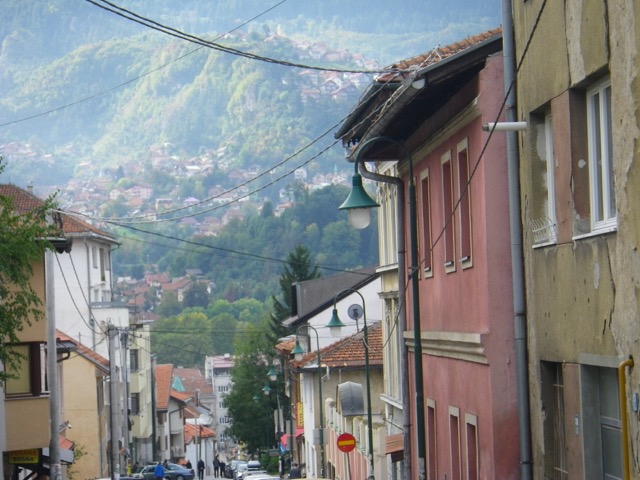
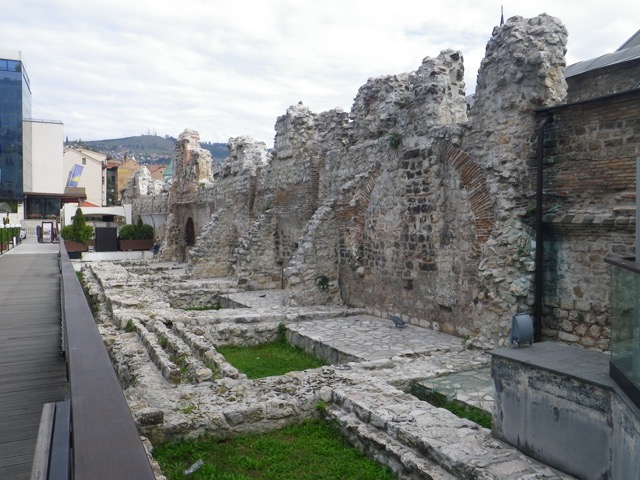

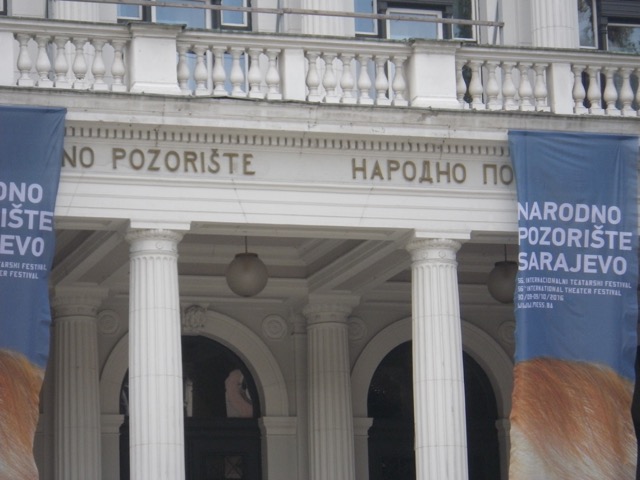
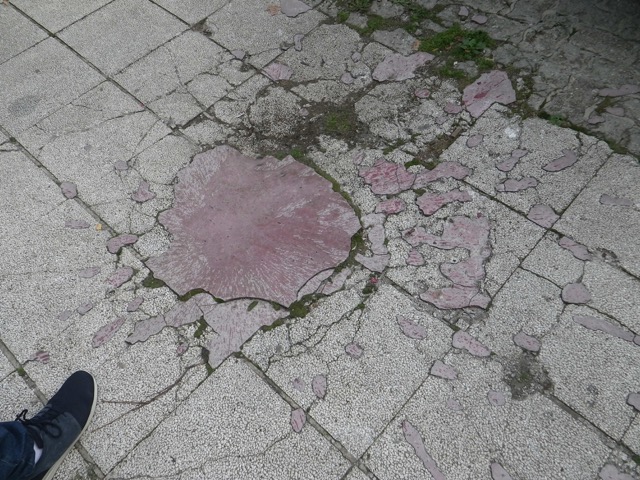



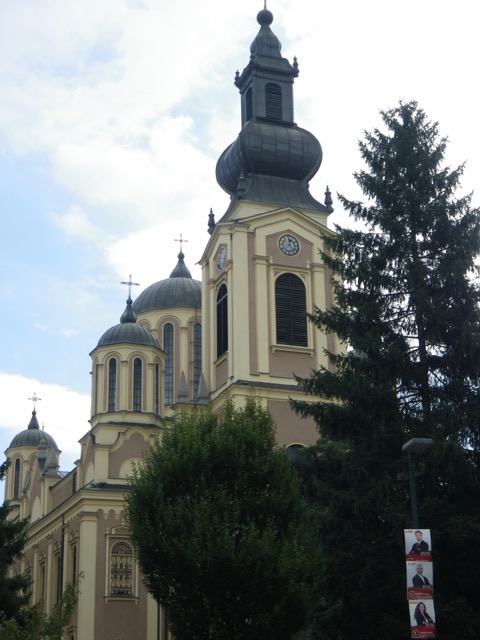
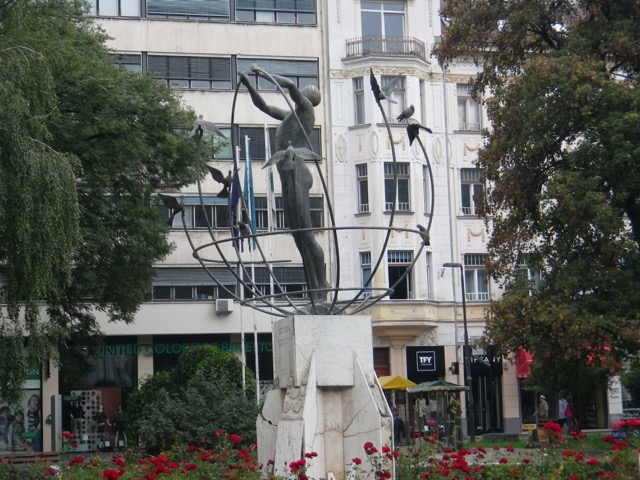
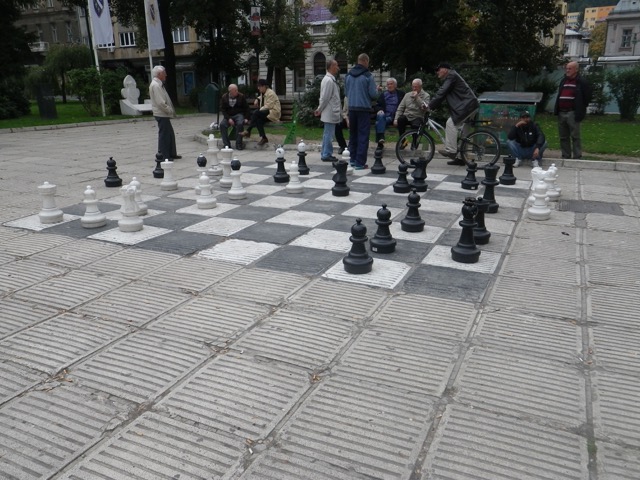




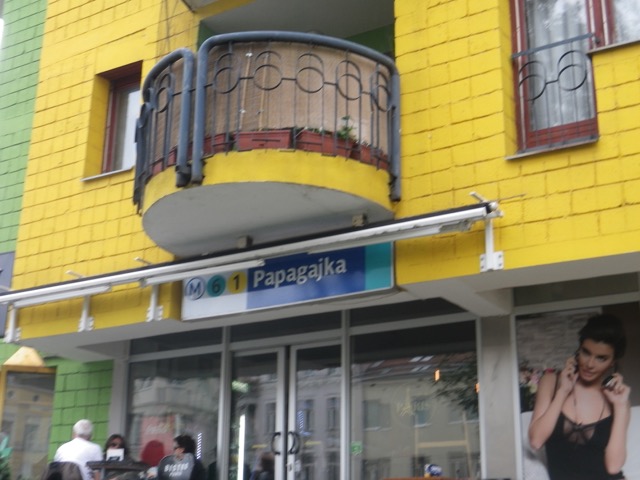

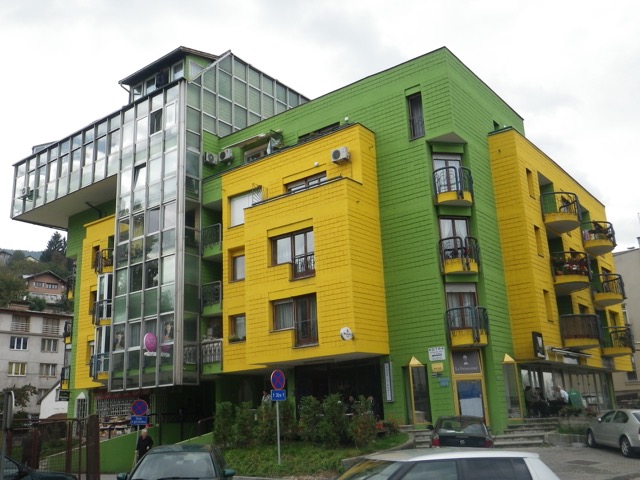












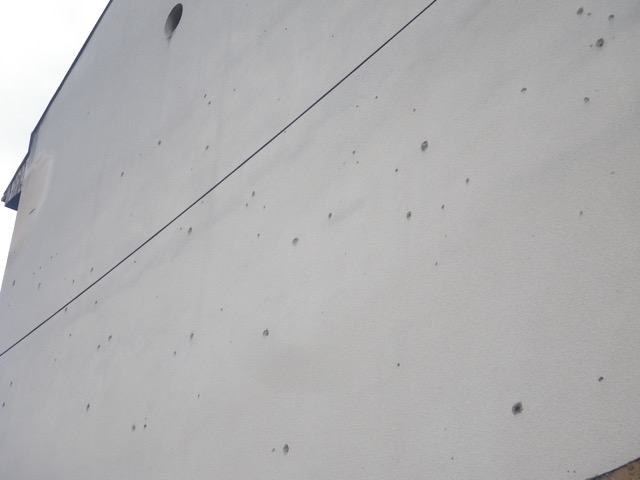

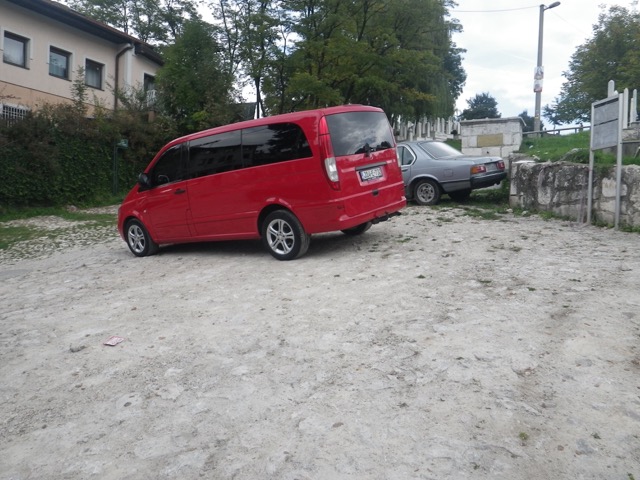

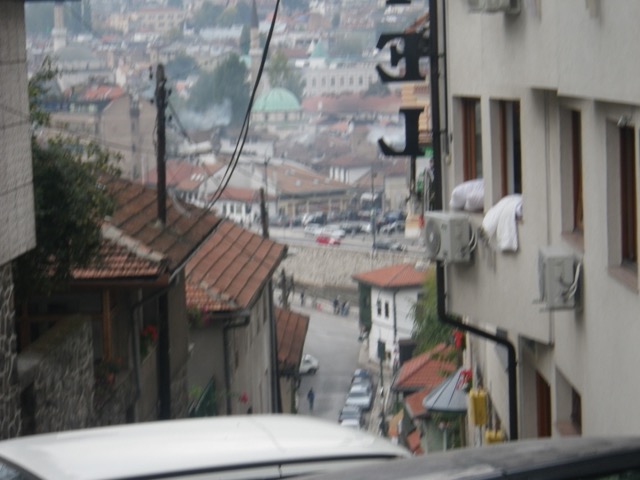


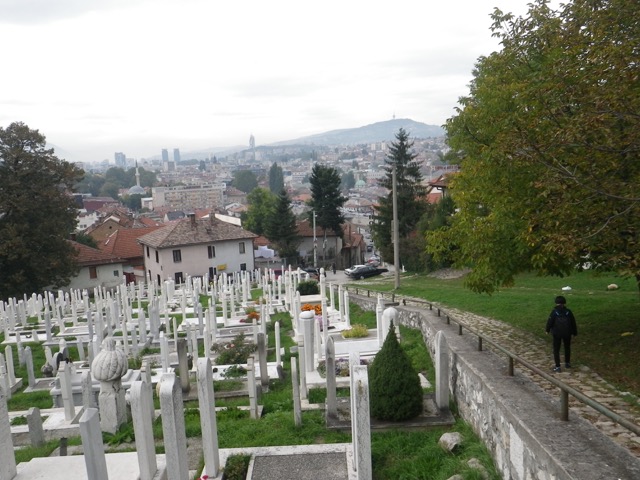
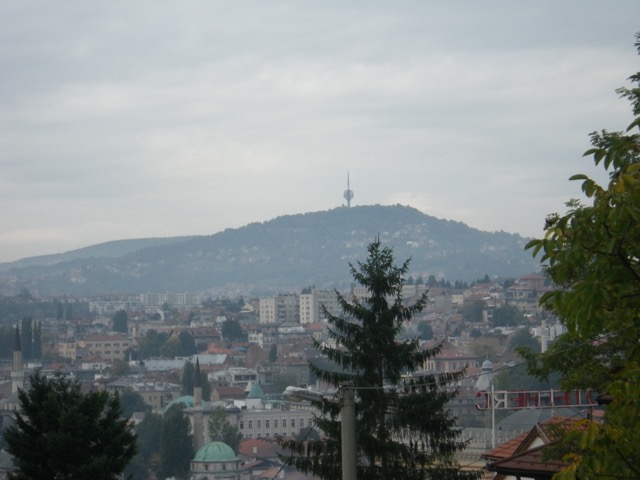

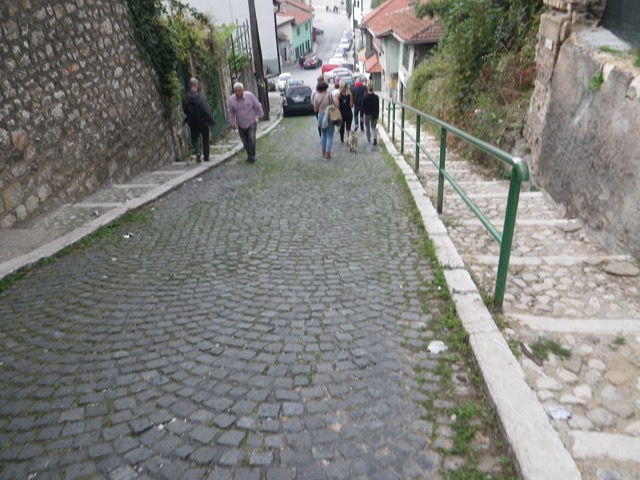
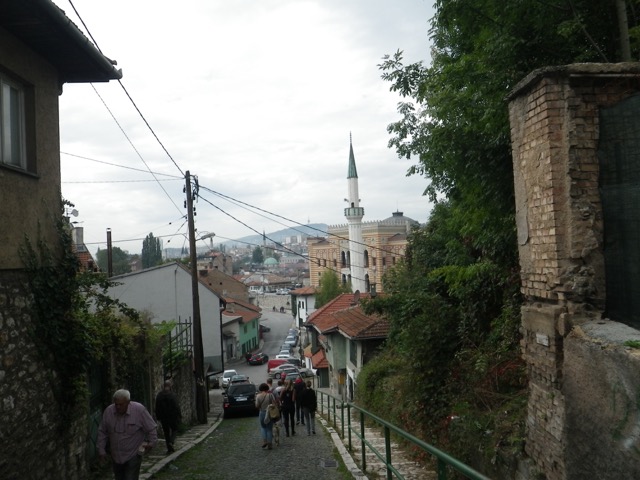

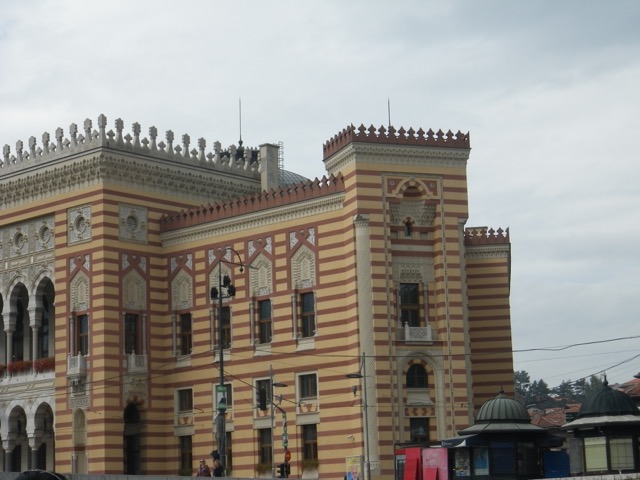
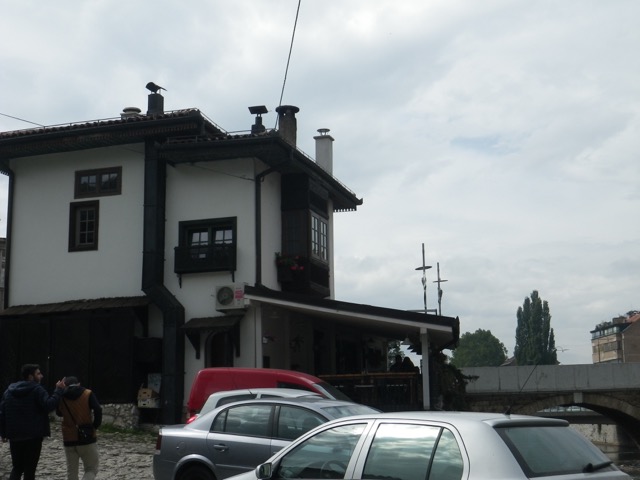
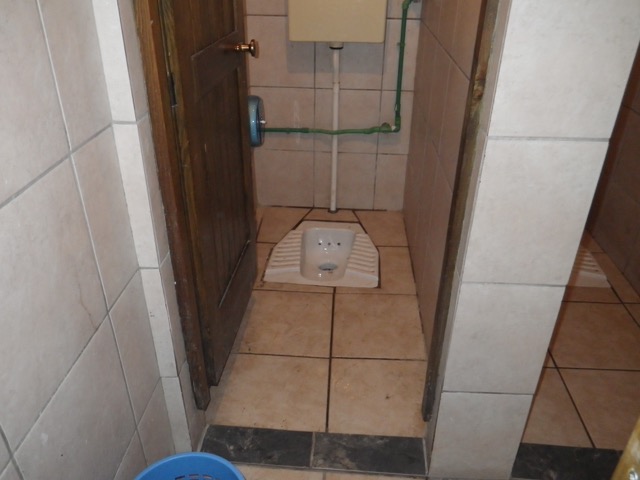




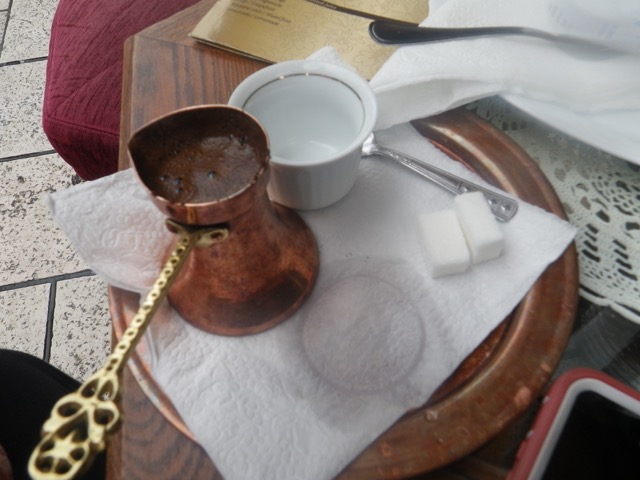

The pub will be fun but if you are feeling really adventurous later in the evening, I noticed a “Jazz and Blues” club in the building with the “Europe, Wasn’t It Enough?” sign! I think you should drop in for a drink.
I noticed that too, and I would go there.
We shall see, both of you. The muezzin is making sure I’m up early! 🙂
It’ll depend on their schedule. I’ll see what I can find.
I’m really enjoying all the photos and history. Thanks Rea.
Thanks!
A very full first day. So much to learn.